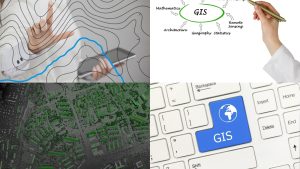Fixed assets are required by some asset-intensive organisations, such as energy, transportation, and infrastructure firms. Capital expenditure is an essential risk for these organisations because it is a vital core requirement. However, because money is locked up in long-term capital equipment, these equipment-dependent businesses are constrained to monetise and spend on operational operations like sales and marketing, staff training, and research and development. Asset-intensive organisations are under growing pressure to maintain high health and safety standards and to prevent harm and injury to employees and others involved with the organisation.
Meeting these difficulties may be very complex and time-consuming without the correct technologies, depleting resources and impeding corporate agility. With effective asset management, you can uncover new revenue growth, operational agility, and better innovation by reinventing how you service your assets. You will need to address three critical shortcomings to grow.
Shortcoming #1: Recognising That A New Business Model Is Required
If you cannot change the fixed asset, modify the business model around the fixed asset. Asset managers increasingly change how they want to use and pay for these assets. While fixed-term lease contracts offer fixed costs and level depreciation over 10-year periods, asset managers are progressively altering how they wish to use and pay for these assets. As a result, demands for usage and payment flexibility are increasing, putting financial risk back on the user’s shoulders.
Managers could enhance the economic output of the equipment and sell the excess to other buyers by improving equipment service techniques and asset uptime. It implies the provider bears the risk because fixed-asset revenues are no longer reliable, but the assets could be more significant.
Choosing the right mix of investments can be less challenging through a purposeful plan. That is why total assets investment models are leveraged by asset specialists to control asset-related expenses. This analytical model, driven by the internet of things (IoT) and artificial intelligence (AI), seeks to balance long-term return potential with anticipated short-term volatility. The trained AI protocols used in these models help build portfolios based on more accurate risk and return forecasts and more complex constraints. It will expand opportunities and reduce risks to achieve the desired goals in a more assured and faster approach.
Shortcoming #2: Over Or Under Maintenance
There might be a problem with both over and under maintenance during the operational phase of the asset life cycle. The fundamental problem with over-maintenance is that it causes two issues that make the asset management system useless. To begin with, there is usually a significant expense associated with performing non-value-added maintenance. Cost can be utilised as a loose guideline in this case because there are well-documented industry benchmarks for maintenance spending to follow.
Second, a company accused of over-maintaining its assets is more likely to execute intrusive maintenance procedures regularly. Our understanding of how common failures develop suggests that the company will be exposed to an increased chance of infant mortality failures. Based on our knowledge of how common failures develop, this indicates that the company will be exposed to more significant risks of infant mortality failures and additional expenses.
The problem of under-maintenance and how it obstructs good asset management is more apparent. Maintenance is sometimes considered as a business expense that may be decreased like any other to increase profitability. Maintenance departments continuously attempt to balance cost and asset performance criteria like dependability and uptime with these challenges. On the other hand, cost-cutting frequently wins out in the shape of postponed preventative maintenance and maintenance professionals that lack the essential expertise and tools to execute accurate jobs.
Concerning both over and under maintenance, strategies to identify the optimum maintenance requirements of critical and suboptimal assets, modern technologies will always facilitate asset-centric organisations. Technologies such as IoT, AI, predictive and prescriptive analytics, simulation and visualisation tools like digital twin, GIS maps and real-time models and curves on smart dashboards can be utilised by asset specialists and can be executed for asset maintenance processes of asset-centric organisations.
Shortcoming #3: Not Knowing What You Have
- Create a list of all the assets owned by the organisation and compare it to what is in the field.
- Create a physical asset hierarchy and customise it.
- Develop the business’s criticality evaluation criteria and apply them to the verified asset base. Individual assets are related to how they affect the organisational strategic strategy in this section.
- Develop and implement a Change Management or Configuration Management procedure to ensure that any future changes to the asset are correctly examined and documented.







